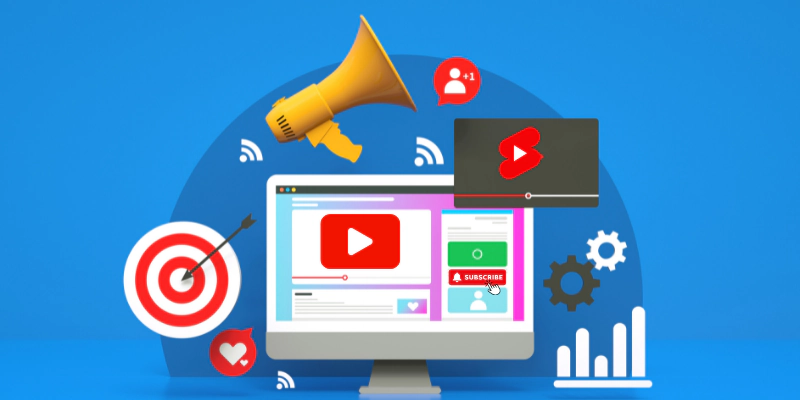“YouTube Marketing” is no longer a buzzword but a necessity for brands, businesses, and individual creators alike. In the vast digital landscape, YouTube stands out as not just a platform for entertainment, but as a pivotal tool for marketing in the modern age. From understanding the intricate algorithms that dictate video rankings to mastering the art of storytelling in content, the journey of YouTube marketing is both complex and rewarding. This guide delves deep into the nuances of building a successful YouTube presence, offering insights into equipment essentials, monetization strategies, influential YouTubers to follow, and much more. Whether you’re a budding creator or a seasoned marketer, this comprehensive overview provides the tools and knowledge to navigate YouTube’s dynamic world effectively. Dive in and discover the potential of YouTube Marketing!
Understanding YouTube’s Algorithm
How Videos are Ranked
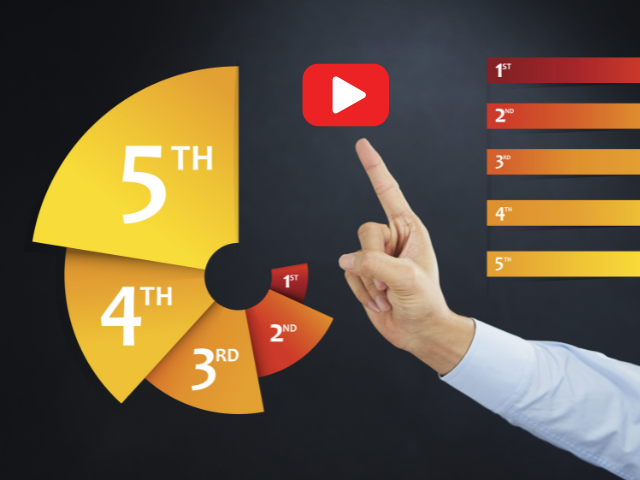
So, you’ve probably noticed that when you search for something on YouTube, certain videos show up at the top, right? And others… not so much. There’s a reason for that, and it’s all about YouTube’s ranking system. Let’s break it down:
- Relevance: This one’s pretty straightforward. If you search for “how to play the guitar,” YouTube will show you videos that match your search terms. So, titles, descriptions, and tags play a big role here.
- Watch Time: It’s not just about clicks. If people click on a video but leave after a few seconds, YouTube thinks, “Hmm, maybe this video isn’t that great.” But if viewers stick around and watch most of it? That’s a big thumbs up in YouTube’s eyes.
- Engagement: This is all about how viewers interact with a video. Likes, comments, shares – they all tell YouTube that people are into this content.
- Freshness: New content can get a little boost, especially if it’s a trending topic. So, if you’re making a video about the latest movie or a hot new song, you might just see it climb the ranks faster.
- Channel Authority: Think of this as YouTube’s trust in a channel. If a channel consistently produces great content that people love, YouTube is more likely to rank their videos higher.
- YouTube Backlinks: When your YouTube videos include backlinks to your website, they create a direct pathway for viewers to access more of your content. This not only increases traffic to your site but also signals to search engines like Google that your content is valuable and relevant. As a result, your website may rank higher in search engine results, leading to increased organic traffic.
Remember, YouTube’s main goal is to keep viewers on their platform for as long as possible. So, they’ll promote videos that they think will achieve that. Keep this in mind when you’re creating your own content, and you’ll be on the right track!
Importance of Watch Time, Engagement, and Relevance
When you’re starting out on YouTube, it might seem like getting a lot of views is the ultimate goal. But there’s more to the story. YouTube looks at a few key things to decide which videos to show people, and among the top contenders are watch time, engagement, and relevance. Let’s unpack these:
- Watch Time:
- What is it? Simply put, watch time is the total number of minutes that viewers have spent watching your videos on YouTube. It’s not just about how many times your video was clicked on, but how long people actually stayed to watch it.
- Why is it important? YouTube sees watch time as a big indicator of a video’s quality. If people are sticking around and watching most or all of your video, it signals to YouTube that your content is worth watching. This can lead to your video being recommended more often.
- Engagement:
- What is it? Engagement refers to how viewers interact with your videos. This includes likes, comments, shares, and even how often it’s added to a playlist.
- Why is it important? High engagement shows YouTube that viewers are not only watching your content but are also finding it valuable or entertaining enough to interact with it. Videos with high engagement often get a boost in rankings because they’re seen as popular and valuable to the YouTube community.
- Relevance:
- What is it? Relevance is all about how closely your video matches what someone is searching for. It’s determined by the video’s title, description, tags, and even the content itself.
- Why is it important? When someone types a query into YouTube’s search bar, they’re looking for specific content. If your video matches their search closely, it’s more likely to show up in their search results. This is why it’s crucial to ensure your video titles, descriptions, and tags accurately reflect your content.
Choosing Your Niche
When you’re thinking about starting a YouTube channel, one of the first things you’ll hear is “Pick a niche.” But what does that really mean, and why is it so important? Let’s break it down:
Importance of Specificity in Content Creation:

Being specific means narrowing down your focus to a particular topic or theme. Instead of making videos about “cooking,” you might choose “vegan desserts” or “quick 5-minute breakfasts.”
- Why is it important? By being specific, you can cater to a particular audience who are passionate about that topic. It helps you stand out in a crowded platform like YouTube. Plus, when viewers know what to expect from your channel, they’re more likely to subscribe and keep coming back for more.
Popular Niches and Their Audiences:
Some niches or topics have a large following on YouTube. Think of areas like gaming, beauty tutorials, or tech reviews.
- Why is it important? Jumping into a popular niche can give you access to a ready-made audience. However, it’s also more competitive. Knowing the popular niches can help you decide if you want to join the big leagues or carve out a unique space for yourself.
Aligning Passion with Profitability:
This is about finding a balance between what you love to do and what can potentially make you money or grow your channel.
- Why is it important? If you’re passionate about your niche, it’ll show in your content, and viewers will be drawn to your genuine enthusiasm. But it’s also essential to consider if there’s an audience for your passion. Doing a bit of research can help you find a sweet spot where your interests meet audience demand.
Choosing a niche isn’t just about picking a random topic. It’s about finding a space where you can share your passion, connect with a specific audience, and grow your YouTube presence. Whether you go broad or niche down, make sure it’s something you love and can commit to.
Video Creation: Tools, Techniques, and Best Practices
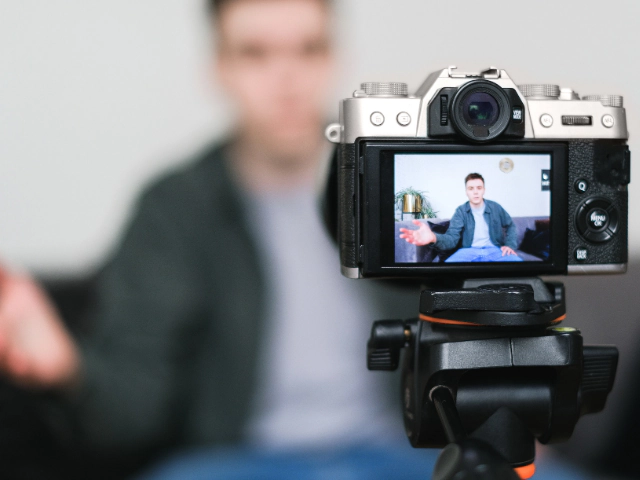
Equipment Essentials
Starting a YouTube channel is exciting, but before you hit that record button, you’ll need some essential equipment. Don’t worry; you don’t have to break the bank. Whether you’re on a budget or ready to invest, here’s what you should consider:
Camera Types and Recommendations:
The camera is your primary tool for recording videos. There are various types, from smartphones with good cameras to DSLRs and mirrorless cameras.
- Recommendations:
- Budget-friendly: Modern smartphones often have excellent cameras suitable for beginners.
- Mid-range: Consider getting a mirrorless camera or an entry-level DSLR. Brands like Canon, Sony, and Panasonic have great options.
- High-end: If you’re looking to invest, professional DSLRs or cinema cameras offer top-notch video quality and features.
You Might Also Like:
Importance of Good Lighting and Recommended Setups:
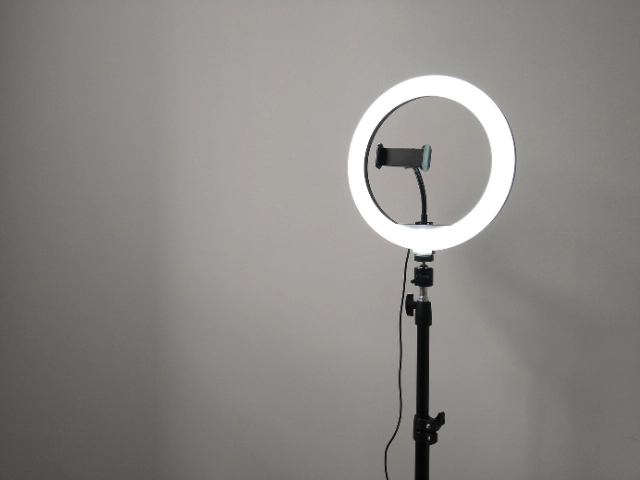
Good lighting can make a significant difference in video quality. It ensures your videos look clear, and your subjects are well-lit.
- Recommendations:
- Natural Light: If you’re on a tight budget, filming near a window during the day can provide soft, flattering light.
- Softbox Lights: These are affordable and provide diffused light, reducing harsh shadows.
- Ring Lights: Popular among beauty vloggers, they offer even lighting directly on the subject.
- LED Panels: These are versatile, adjustable, and can mimic different types of light.
Audio Equipment for Clear Sound:

While visuals are crucial, clear audio is equally important. Viewers might forgive slightly off video quality, but poor sound can be a deal-breaker.
- Recommendations:
- Lapel/Lavalier Mic: These are small microphones that clip onto your clothing, great for interviews or talking head videos.
- Shotgun Mic: These mics are directional, capturing sound from where they’re pointed. They’re ideal for vlogging.
- USB Microphones: Perfect for voiceovers or seated videos, they offer good quality and plug directly into your computer.
- Audio Recorders: Devices like the Zoom H5 or H6 allow for high-quality audio recording separate from your camera.
Remember, while having the right equipment can enhance your video quality, it’s the content that truly matters. Start with what you have, learn the basics, and upgrade as you go along.
Filming Techniques
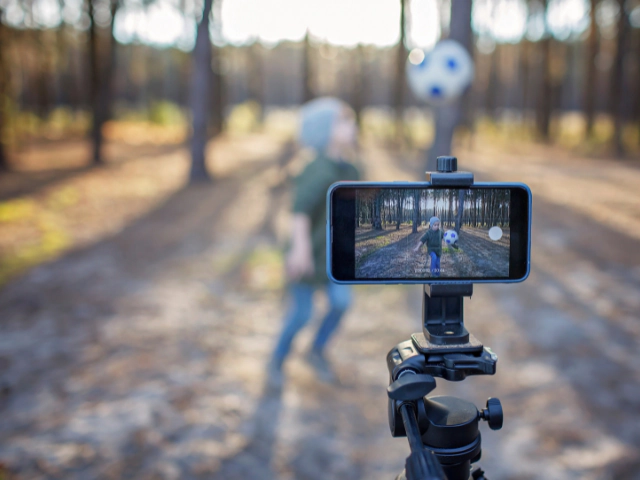
Creating engaging videos isn’t just about having the right equipment; it’s also about how you use it. Filming techniques can elevate your content, making it more professional and captivating for your viewers. Let’s dive into some basics:
Camera Angles and Movements:
Camera angles and movements determine how a scene is framed and how the camera moves to capture it.
- Tips:
- Eye Level: This is the most natural angle, where the camera is level with the subject’s eyes. It’s great for vlogs and interviews.
- Low Angle: Placing the camera below the subject, looking up, can make them appear dominant or larger-than-life.
- High Angle: Shooting from above, looking down on the subject, can make them seem vulnerable or small.
- Pan: This is a horizontal camera movement, moving from left to right or vice versa.
- Tilt: A vertical movement, where the camera tilts up or down.
- Dolly/Tracking: Moving the entire camera forward or backward to follow a subject.
Setting the Scene: Backgrounds and Environments:
The background and environment set the tone for your video, adding context and depth to your content.
- Tips:
- Declutter: A messy background can be distracting. Ensure the space behind you is tidy and complements your video’s theme.
- Depth: Avoid filming flat against a wall. Having some space behind you creates depth and a more dynamic shot.
- Props: Use props that relate to your video’s topic. For instance, if you’re talking about books, having a bookshelf in the background can be fitting.
- Natural Environment: Sometimes, the best background is a natural setting, like a park or a cafe, which can add authenticity to your video.
Incorporating these filming techniques can make a world of difference in your videos. They add a layer of professionalism and can help convey your message more effectively. As always, practice makes perfect, so keep experimenting and learning as you go!
Editing Techniques
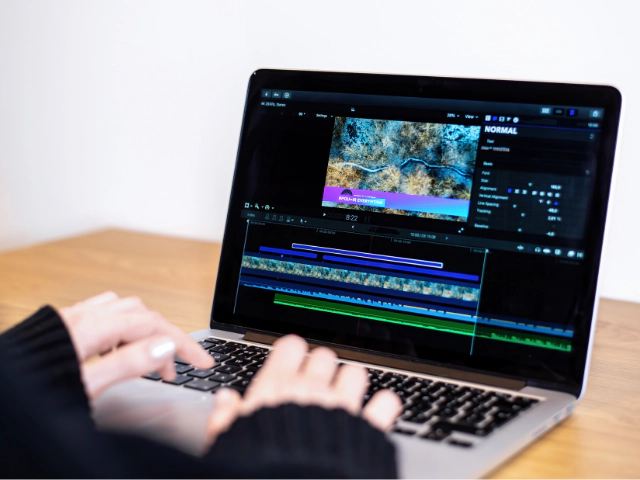
Once you’ve captured your footage, the magic really begins in the editing room (or, let’s be real, on your computer). Editing is where you piece together your story, refine the visuals, and enhance the overall viewing experience. Here are some fundamental techniques to get you started:
Transition Styles and When to Use Them:
Transitions are the effects used to switch from one clip to another. They help to smoothly move the story along and can set the mood.
- Tips:
- Cut: The most basic transition where one clip instantly changes to the next. It’s clean and works in most scenarios.
- Fade: This is where a clip fades to black (or white) before the next clip appears. It’s often used to indicate the passage of time.
- Dissolve: One clip gradually replaces another. It’s a softer transition compared to a cut.
- Wipe: One clip “wipes” across the screen to reveal the next. It can be horizontal, vertical, or even diagonal.
- Zoom: The scene appears to move closer or further away before switching to the next clip. It can create a dynamic shift in focus.
Color Grading Basics:
Color grading is the process of adjusting the colors and tones in your video to achieve a desired look or mood.
- Tips:
- Correction: Before grading, correct any color imbalances. Ensure skin tones look natural and the overall color is neutral.
- Mood: Decide on the mood you want. A warm, golden hue might evoke nostalgia, while a blue tint can create a cooler, more distant feel.
- Consistency: Ensure your color grading is consistent throughout the video, especially if you’re cutting between different scenes or locations.
Sound Editing and Background Music Selection:
This involves refining the audio in your video, adding effects, and choosing the right background music.
- Tips:
- Noise Reduction: Remove any unwanted background noise to ensure clear audio.
- Levels: Balance the audio levels so that dialogue is clear and background music isn’t overpowering.
- Music Choice: Select music that complements the mood of your video. Remember to use royalty-free tracks or music you have rights to.
- Sound Effects: These can enhance certain moments, like adding a comedic “boing” or dramatic “thud.”
Editing is both an art and a skill. It can take time to master, but with each video you edit, you’ll learn more about what works and what doesn’t. Remember, the goal is to enhance the viewer’s experience and effectively convey your message.
Script Writing
Behind every compelling video is a well-thought-out script. It’s the backbone of your content, guiding what you say and how you convey your message. Whether you’re creating an educational video, a vlog, or a short film, a good script can make all the difference. Here’s what you need to know:
Crafting Engaging Scripts:
This involves writing a script that grabs the viewer’s attention and keeps them hooked till the end.
- Tips:
- Start Strong: Your opening lines should immediately capture interest. Pose a question, share a surprising fact, or tell a short anecdote.
- Stay Focused: Stick to your main topic or message. Avoid going off on tangents that might confuse or bore your audience.
- Engage Emotionally: Connect with your viewers on an emotional level. Share personal stories, use humor, or address common feelings and experiences.
Balancing Information with Entertainment:
Finding the right mix of informative content and entertaining elements to keep viewers both educated and engaged.
- Tips:
- Show, Don’t Just Tell: Use visuals, animations, or demonstrations to explain complex points.
- Vary Your Tone: Mix serious moments with lighter ones. A touch of humor or a brief anecdote can make information more digestible.
- Interactive Elements: Pose questions to your audience, create polls, or encourage comments to make your video more interactive.
Structuring Your Video
The structure of your video is like the blueprint of a building. It ensures that your content flows logically, keeps viewers engaged, and delivers your message effectively. Just like you wouldn’t build a house without a plan, you shouldn’t create a video without a clear structure. Here’s how to go about it:
Introduction:
The beginning of your video where you set the stage for your viewers.
- Tips:
- Grab Attention: Start with a hook—a surprising fact, a question, or a bold statement—to immediately capture interest.
- Set Expectations: Briefly outline what the video will cover. This gives viewers a roadmap and a reason to keep watching.
- Build Credibility: If it’s a topic that requires expertise, briefly mention why you’re qualified to talk about it.
Body:
The main portion of your video where you delve into the topic in detail.
- Tips:
- Segment Your Content: Break down your content into clear sections or points. This makes it easier for viewers to follow and digest.
- Use Visual Aids: Graphics, animations, or on-screen text can help emphasize and clarify your points.
- Engage Throughout: Keep your viewers active and engaged. Pose questions, share anecdotes, or use interactive elements like polls.
Conclusion:
The wrap-up of your video where you summarize and leave your viewers with a final thought.
- Tips:
- Recap Key Points: Briefly revisit the main points you covered. This reinforces the information for your viewers.
- End Strong: Leave your audience with a memorable closing thought, a call-to-action, or a teaser for your next video.
- Encourage Interaction: Ask viewers to like, comment, share, or subscribe. Engaging with your audience can boost your video’s reach and performance.
Engaging Hooks and Call-to-Actions:
Hooks grab attention at the start, while call-to-actions guide viewers on what to do next.
- Tips:
- Craft a Compelling Hook: Think of it as your video’s headline. It should make viewers think, “I need to watch this!”
- Clear Call-to-Actions: Whether you want viewers to subscribe, check out a product, or watch another video, be clear and direct about it.
Structuring your video effectively ensures that your content is cohesive, engaging, and impactful. It’s the difference between a video that’s easily forgotten and one that leaves a lasting impression. So, plan wisely and create content that resonates!
Storytelling in Videos
Storytelling is an age-old art, and when it comes to videos, it’s the secret sauce that can transform your content from mundane to magical. It’s not just about relaying facts; it’s about weaving a narrative that resonates with your viewers on a deeper level. Here’s how to master storytelling in your videos:
Building a Narrative:
A narrative is the structured progression of your story, guiding viewers from the beginning to the end.
- Tips:
- Have a Clear Theme: Every story needs a central theme or message. Decide on yours and let it guide your narrative.
- Introduce Conflict: Introducing a problem or challenge can captivate viewers. It creates tension and makes them eager to see the resolution.
- Show the Journey: Don’t just jump to the conclusion. Showcase the process, the ups and downs, and the lessons learned.
Engaging the Audience Emotionally:
Connecting with your viewers on an emotional level, making them feel something—whether it’s joy, sadness, inspiration, or curiosity.
- Tips:
- Be Authentic: Genuine emotions resonate more. Share personal experiences, vulnerabilities, and real reactions.
- Use Music Wisely: The right background music can amplify the emotions you’re trying to convey.
- Visual Storytelling: Use visuals that complement and enhance the emotions of your narrative. A poignant image or a well-timed close-up can speak volumes.
Storytelling in videos is about more than just relaying information. It’s about taking your viewers on a journey, making them feel, think, and ultimately, remember. By crafting compelling narratives and connecting emotionally, you can create videos that leave a lasting impact.
Titles and Thumbnails

In the vast ocean of YouTube content, your video’s title and thumbnail are like the shining lighthouse guiding viewers to your content. They play a crucial role in making that all-important first impression. Here’s how to ensure they’re compelling and clickable:
Crafting Compelling Titles:
- What is it? The title gives viewers a snapshot of what your video is about. It should be clear, concise, and intriguing.
- Tips:
- Be Descriptive: Your title should give viewers a clear idea of the video’s content. Avoid clickbait, but do pique curiosity.
- Optimize for Search: Think about what terms people might use to search for your video and incorporate relevant keywords.
- Keep it Short: While YouTube allows for longer titles, it’s best to keep them under 60 characters so they display well on all devices.
Designing Clickable Thumbnails:
- What is it? Thumbnails are the small images representing your video on YouTube. They’re often the first thing viewers see.
- Tips:
- Use High-Quality Images: Ensure your thumbnail is clear, well-lit, and high-resolution.
- Include Faces: Studies have shown that thumbnails with faces, especially expressive ones, tend to get more clicks.
- Relevant Imagery: The image should reflect the content of the video. If it’s about a product review, show the product.
- Bold Text: If you use text, ensure it’s bold and readable, even on smaller screens. But keep it minimal!
- Consistency: Having a consistent style or theme for your thumbnails can make your channel look more professional and cohesive.
Titles and thumbnails are like the front cover of a book. They don’t just convey what’s inside; they entice viewers to dive in. Spend time crafting them thoughtfully, test different options, and always aim for clarity and authenticity. Remember, it’s not just about getting clicks; it’s about setting the right expectations for your viewers.
Video Editing Software Recommendations
Editing is where the raw footage you’ve captured comes to life, transforming into a polished video ready for your audience. The software you choose plays a pivotal role in this process. Whether you’re a beginner or a seasoned pro, there’s video editing software out there for you. Here’s a breakdown:
Free vs. Paid Options:
Free software typically offers basic editing tools, while paid versions come with advanced features, more effects, and professional-grade tools.
- Recommendations:
- Free Options:
- DaVinci Resolve: Known for its professional-grade color correction and audio post-production features.
- Shotcut: An open-source software with a range of editing tools. It might have a steeper learning curve, but it’s powerful.
- iMovie: Exclusively for Mac users, it’s user-friendly and perfect for beginners.
- Paid Options:
- Adobe Premiere Pro: A professional software used by many in the industry. It’s feature-rich and offers seamless integration with other Adobe products.
- Final Cut Pro: Exclusive to Mac, it’s known for its advanced features and smooth performance.
- Camtasia: Not only great for tutorials and presentations, but it also offers screen recording along with editing tools.
- Free Options:
Screen Recording Software:
Software specifically designed to capture what’s happening on your computer screen, often used for tutorials, webinars, and presentations.
- Recommendations:
- Free Options:
- OBS Studio: A powerful open-source tool that’s perfect for both screen recording and live streaming.
- ShareX: Offers a wide range of features, including screen recording, capturing, and even GIF creation.
- Paid Options:
- Camtasia: Apart from its editing capabilities, it’s renowned for its screen recording feature.
- ScreenFlow: Exclusively for Mac, it’s intuitive and offers high-quality recordings.
- Bandicam: Known for its high compression rate, ensuring good quality recordings with smaller file sizes.
- Free Options:
Tips and Tricks for Enhancing Video Quality:
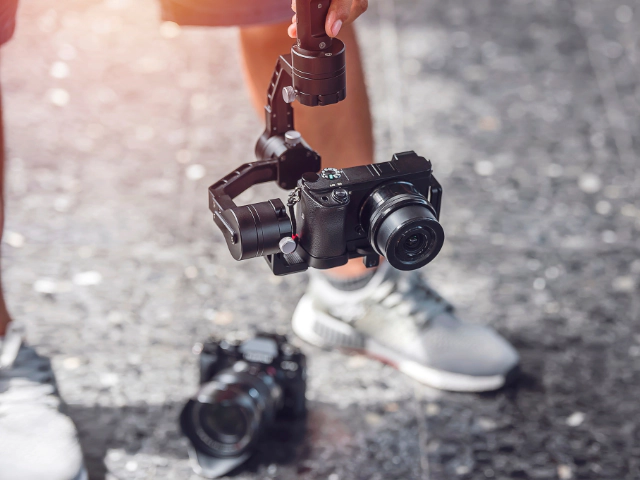
Techniques and tools within the software that can elevate your video’s quality.
- Recommendations:
- Use Color Correction: Tools like Lumetri Color in Premiere Pro can help adjust and enhance your video’s color.
- Stabilize Shaky Footage: Most software offers stabilization tools to smooth out any unwanted camera shake.
- Use Transitions Sparingly: While it’s tempting to use flashy transitions, often, simple cuts or subtle fades work best.
- Enhance Audio: Clean up any background noise and adjust audio levels for clear and balanced sound.
Choosing the right video editing and screen recording software depends on your needs, budget, and the level of complexity you’re aiming for. While the software is essential, remember that it’s your creativity and storytelling that truly make a video stand out. So, pick a tool that you’re comfortable with and let your creativity flow!
Posting Frequency and Consistency
In the world of YouTube, consistency is key. It’s not just about creating great content, but also about delivering it regularly to your audience. Let’s explore why posting frequency and consistency matter and how to strike the right balance:
Importance of Regular Uploads:
- What is it? This refers to how often you upload new content to your YouTube channel, whether it’s daily, weekly, bi-weekly, or even monthly.
- Why it matters:
- Builds Audience Expectation: When viewers know when to expect new content from you, they’re more likely to return to your channel.
- Boosts Channel Growth: Regular uploads can improve your channel’s visibility and discoverability on YouTube.
- Engages Subscribers: Keeping your subscribers engaged with fresh content can lead to increased loyalty and interaction.
Balancing Quality with Quantity:
- What is it? The challenge of producing high-quality content while also maintaining a consistent posting schedule.
- Tips:
- Plan Ahead: Create a content calendar to plan your videos in advance. This can help ensure you have enough time for research, filming, and editing.
- Batch Production: Consider filming multiple videos in one session. This can be efficient and ensures you have content ready to go.
- Quality Over Quantity: While regular uploads are essential, never sacrifice the quality of your content. It’s better to have fewer, high-quality videos than many subpar ones.
Understanding Peak Times and Audience Availability:
- What is it? Recognizing when your target audience is most active on YouTube and scheduling your uploads accordingly.
- Tips:
- Analyze Your Analytics: Dive into YouTube Analytics to see when your viewers are most active.
- Consider Time Zones: If you have a global audience, think about the best times that cater to multiple time zones.
- Test and Learn: Experiment with different posting times and days to see what yields the best engagement.
While it’s essential to maintain a consistent posting schedule, it’s equally crucial to ensure that the content you’re delivering is valuable and resonates with your audience. By understanding your audience’s habits and balancing quality with quantity, you can create a posting strategy that drives growth and engagement on your YouTube channel.
YouTube Guidelines, Rules, and Regulations
Navigating the world of YouTube isn’t just about creating and posting content; it’s also about understanding and adhering to the platform’s guidelines. These rules ensure that the platform remains safe, respectful, and enjoyable for all users. Let’s dive into the key aspects you need to be aware of:
Community Guidelines:
These are rules set by YouTube to ensure that content on the platform is appropriate and doesn’t harm or mislead users.
- Key Points:
- No Harmful or Dangerous Content: This includes anything that might encourage harmful or risky behavior.
- Avoid Hate Speech: Content that promotes violence or hatred against individuals or groups based on attributes like race, religion, or gender is prohibited.
- Respect Copyright: Only upload videos that you have the rights to or have permission to use.
- No Misinformation: Spreading false information, especially on sensitive topics, can lead to penalties.
Copyright and Fair Use:
Copyright laws protect original works, and fair use is a doctrine that allows limited use of copyrighted material without permission.
- Tips:
- Seek Permission: If you want to use someone else’s content, always get permission first.
- Understand Fair Use: While fair use might allow for some content to be used, it’s a complex area. It’s not a guarantee against copyright claims.
- Use Royalty-Free Music: There are many platforms, like Epidemic Sound offering music that can be freely used in YouTube videos without copyright issues.
Monetization Policies:
Rules set by YouTube for channels that want to earn money from their content.
- Key Points:
- Ad-Friendly Content: If you’re looking to earn from ads, your content should be suitable for advertisers.
- Join the YouTube Partner Program: To monetize, you need to be a part of this program, which has its own set of requirements, including a minimum number of subscribers and watch hours.
- Avoid Reused Content: YouTube discourages uploading content that’s available elsewhere or not originally created by the uploader.
Age Restrictions and Content Rating:
Mechanisms to ensure that content is appropriate for the intended audience, especially younger viewers.
- Tips:
- Rate Your Content: If your content isn’t suitable for all ages, be honest in your content rating.
- Understand YouTube Kids: If you’re creating content for children, familiarize yourself with the guidelines for YouTube Kids, a separate app designed for younger viewers.
While YouTube offers a vast platform for creators to share their content and reach a global audience, it’s essential to respect and adhere to the platform’s guidelines. By doing so, you ensure a positive experience for both yourself and your viewers, and you safeguard the longevity and reputation of your channel.
Analytics, Tools, and Performance Measurement
In the digital age, data is power. For YouTubers, understanding analytics and performance metrics is crucial to gauge the success of their content and refine their strategies. Let’s explore the tools and metrics that can help you optimize your YouTube journey:
Introduction to YouTube Analytics: Understanding the Basics:
YouTube Analytics is the platform’s built-in tool that provides insights into how your content is performing.
- Key Points:
- Dashboard Overview: Get a snapshot of your channel’s performance, including views, watch time, and subscriber count.
- Audience Insights: Understand who’s watching your videos, including their age, location, and viewing habits.
- Engagement Metrics: Dive into how viewers are interacting with your content, from likes and shares to comments.
Key Metrics Every YouTuber Should Track:
These are the essential metrics that give insights into your channel’s health and growth.
- Recommendations:
- Views: The number of times your video has been watched.
- Watch Time: The total number of minutes that viewers have spent watching your videos.
- Engagement Rate: A combination of likes, shares, comments, and other interactions divided by views.
- Subscriber Growth: Monitor how your subscriber count is increasing or decreasing over time.
- Click-Through Rate (CTR): The percentage of people who click on your video after seeing its thumbnail.
Deep Dive into YouTube’s Built-in Analytics Platform:
A more in-depth exploration of the various tools and metrics available within YouTube Analytics.
- Tips:
- Traffic Source: Understand where your viewers are coming from, be it search results, suggested videos, or external sources.
- Playback Locations: See where your videos are being watched, whether on YouTube, embedded on other sites, or in the YouTube app.
- Audience Retention: Monitor how long viewers are staying with your video. Are they watching till the end or dropping off at a specific point?
Third-party Tools for Enhanced Insights:
External tools that offer additional or specialized insights beyond YouTube’s native analytics.
- Recommendations:
You Might Also Like:
See a comparison between TubeBuddy & VidIq here
Interpreting Data to Refine Content Strategy and Improve Engagement:
Using the insights from analytics to make informed decisions about your content strategy.
- Tips:
- Test and Learn: Experiment with different content types, posting times, or video lengths and monitor the results.
- Listen to Feedback: Comments and engagement metrics can give valuable feedback on what your audience likes or dislikes.
The Importance of A/B Testing with Thumbnails and Titles:
Testing two different thumbnails or titles to see which one performs better in terms of clicks and engagement.
- Tips:
- Use Built-in Tools: YouTube sometimes offers A/B testing features for certain channels.
- Monitor CTR: The click-through rate will give you a clear indication of which thumbnail or title is more effective.
Setting and Tracking KPIs for YouTube Growth:
KPIs (Key Performance Indicators) are specific metrics you set to measure the success of your YouTube goals.
- Recommendations:
- Set Clear Goals: Whether it’s reaching a certain number of subscribers, increasing watch time, or boosting engagement, have clear objectives.
- Regularly Review: Periodically check your KPIs to see if you’re on track or if adjustments are needed.
While creating engaging content is at the heart of a successful YouTube channel, understanding and leveraging analytics is the brain behind the operation. By regularly monitoring and interpreting your data, you can make informed decisions that propel your channel to new heights.
Monetization Strategies
Monetizing your YouTube channel is the dream of many creators. It’s not just about earning money, but also about sustaining your passion and turning it into a viable career or business. But how do you go about it? Let’s explore the various strategies available:
YouTube Partner Program:
The official program by YouTube that allows creators to earn money from ads shown on their videos.
- Key Points:
- Eligibility Criteria: You need to have at least 1,000 subscribers and 4,000 watch hours in the past 12 months to apply.
- Types of Ads: There are various ad formats like display ads, skippable video ads, and non-skippable video ads.
- Revenue Share: YouTube typically keeps 45% of the ad revenue, while the creator gets 55%.
Super Chat and Channel Memberships:
Features that allow your viewers to financially support you directly through YouTube.
- Recommendations:
- Super Chat: Viewers can pay money to pin their comments on live chat during your live streams.
- Channel Memberships: Viewers can subscribe to your channel by paying a monthly fee in exchange for special badges, emojis, or exclusive content.
Sponsored Content and Brand Partnerships:
- What is it? Collaborating with brands or companies to promote their products or services in your videos.
- Tips:
- Stay Authentic: Only promote products or services you genuinely believe in or use.
- Disclosure: Always disclose to your viewers if a video is sponsored, as required by law and YouTube’s guidelines.
- Negotiate Fairly: Understand your channel’s value and negotiate terms that are beneficial for both parties.
Affiliate Marketing on YouTube:
Promoting products in your videos and earning a commission for every sale made through your referral link.
- Recommendations:
- Choose Relevant Products: Promote products that are relevant to your content and audience.
- Use Shortened Links: Use link shorteners to make your affiliate links more user-friendly.
- Clear Disclosure: Inform your viewers that you’ll earn a commission if they purchase through your link.
YouTube Shorts
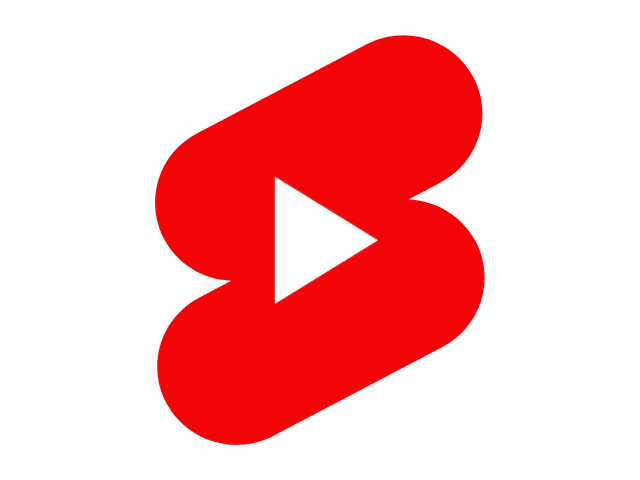
In response to the rising popularity of short-form video content on platforms like TikTok, YouTube introduced “Shorts” – a new way for creators to engage their audience with videos that are 60 seconds or less. Let’s explore what YouTube Shorts are all about and how you can leverage them:
Introduction and Importance:
YouTube Shorts are vertical videos that last up to 60 seconds, designed for quick consumption and mobile viewing.
- Why it matters:
- Capture Short Attention Spans: In today’s fast-paced digital world, many viewers prefer quick, bite-sized content.
- Reach a New Audience: Shorts appear on the YouTube homepage, giving creators a chance to be discovered by a broader audience.
- Quick and Easy Creation: With simple tools, creators can quickly produce and upload engaging content.
How to Create Engaging Shorts:
Tips and best practices to make your Shorts stand out.
- Recommendations:
- Keep it Concise: With just 60 seconds, get straight to the point and deliver your message or story efficiently.
- Use Engaging Visuals: Bright colors, close-ups, and quick cuts can grab viewers’ attention.
- Leverage Music: Use YouTube’s built-in music library to add catchy tunes to your Shorts.
- Engage with Trends: Jump on popular trends or challenges to make your Shorts more discoverable.
YouTube Shorts Monetization
YouTube Shorts, YouTube’s response to the short-form video trend, has seen a significant rise in popularity since its 2021 inception. With some Shorts videos accumulating over half a billion views, it begs the question: How can creators monetize these bite-sized videos?
YouTube’s Revenue-Sharing Model for Shorts:
In September, YouTube rolled out an updated Partner Program that includes a revenue-sharing model specifically designed for Shorts.
- How it Works:
- Pooling Ad Revenue: Each month, YouTube gathers all the revenue generated from ads shown in the Shorts feed.
- Calculating the Creator Pool: A portion of the initial pooled money compensates for songs used in YouTube Shorts. For instance, if a Short incorporates two songs, only a third of its ad revenue contributes to the Creator Pool. The rest compensates for the music.
- Dividing the Creator Pool: This pool is then distributed among all monetizing creators based on their view count. For example, if you contributed 5% of the total Shorts views for a specific period, you’d receive 5% of the Creator Pool.
- Final Payout: From this amount, YouTube retains 55%, leaving the creator with the remaining 45%. So, if your share totals $800, you’d receive approximately $360.
Eligibility for Monetizing Shorts:
- YouTube Partner Program: To earn from Shorts, creators must be part of the YouTube Partner Program. The criteria include:
- 1,000 subscribers.
- Either 4,000 valid public watch hours over the past 12 months for longer YouTube videos or 10 million valid public Short views in the past 90 days.
- Additional Requirements:
- Adherence to YouTube’s channel monetization policies.
- Residency in a region where the YouTube Partner Program is available.
- The absence of Community Guidelines strikes.
- Activation of 2-step verification for the linked Google account.
- An active AdSense account.
Opting for YouTube Shorts Monetization:
- Joining the Partner Program: Once eligible, creators can apply to the YouTube Partner Program. After joining, they need to specifically opt-in for Shorts monetization by accepting the Base Terms and the Shorts Monetization Module in YouTube Studio.
- Earnings Overview: Creators can monitor their Shorts earnings via YouTube Analytics.
Potential Earnings:
- Estimations: Earnings can vary, but some creators have reported:
- A creator with 84,000 subscribers and 1.9 million Shorts views earned $76.23.
- Another with 212,000 subscribers and 4.2 million Shorts views made $163.73.
- A creator with 573,000 subscribers and 10.3 million Shorts views earned $445.09.
- And one with 2.1 million subscribers and 22 million Shorts views received $872.14.
Other Monetization Opportunities:
- Channel Memberships: Offer premium subscriptions for exclusive content.
- Merchandise Sales: Use YouTube Shopping to sell merchandise directly.
- Affiliate Programs: Promote products and earn commissions on sales.
- Digital Products: Use Shorts as a promotional tool for your digital products.
- Brand Partnerships: Collaborate with brands for sponsored content.
Courses and Learning Resources

Embarking on a YouTube journey can be both exciting and overwhelming. With the vast amount of information available, it’s essential to find structured and reliable resources to guide you. Whether you’re a budding YouTuber or looking to refine your skills, here are some top courses and resources to consider:
Top Courses for Budding YouTubers:
These are structured learning modules designed to provide foundational knowledge and advanced techniques for YouTube content creation.
- Recommendations:
- YouTube Creator Academy: A free resource offered by YouTube itself, covering everything from channel optimization to monetization.
- Udemy’s YouTube Masterclass: A comprehensive course that dives into video editing, SEO strategies, and audience growth.
- Skillshare’s YouTube Success: Taught by popular YouTubers, this course offers insights into scriptwriting, filming, and audience engagement.
Books and E-books on YouTube Marketing:
Written resources that provide in-depth knowledge of YouTube strategies, algorithms, and best practices.
- Recommendations:
- “YouTube Secrets” by Sean Cannell and Benji Travis: A guide to building a successful YouTube channel from scratch.
- “Tube Ritual” by Brian G. Johnson: Focuses on the first 5,000 subscribers and how to achieve consistent growth.
- “Video Marketing Strategy” by Jon Mowat: Offers insights into video storytelling and how to leverage it for brand growth.
Workshops and Webinars:
Live or recorded sessions that delve into specific YouTube topics, often featuring industry experts or successful creators.
- Tips:
- Stay Updated: Platforms like Eventbrite or Meetup often list upcoming YouTube-related workshops.
- Join Creator Communities: Online communities, like the YouTube Creators Forum, often host webinars and Q&A sessions with experts.
- Network: These events are not just learning opportunities but also a chance to connect with fellow creators and potential collaborators.
Continuous learning is key to staying updated and refining your YouTube strategies. By investing in quality courses and resources, you equip yourself with the knowledge and skills to navigate the ever-evolving landscape of YouTube and achieve lasting success.
Influential YouTubers to Follow
The YouTube community is vast and diverse, with creators from all walks of life sharing their unique perspectives and expertise. Whether you’re seeking inspiration, education, or entertainment, here are some influential YouTubers across various niches that you might consider following:
Educators in the YouTube Space:
- Roberto Blake: A creative entrepreneur who offers insights into YouTube growth, monetization, and content creation.
- Nick Nimmin: Specializes in helping content creators grow their channels, improve their video quality, and navigate the YouTube platform.
- Derral Eves: An expert in video marketing, Derral provides deep dives into YouTube algorithms, strategies, and trends.
Creators Who Excel in Marketing and Branding:
- Sunny Lenarduzzi: A branding and business strategist, Sunny offers actionable tips on leveraging YouTube for business growth.
- Neil Patel: A renowned name in digital marketing, Neil’s channel is a treasure trove of SEO strategies, content marketing tips, and more.
- Gary Vaynerchuk: While broader than just YouTube, GaryVee’s insights into branding, content creation, and social media are invaluable for any creator.
Inspirational Success Stories:
- MKBHD (Marques Brownlee): Starting as a tech reviewer in his bedroom, Marques has grown into one of the most respected tech influencers on YouTube.
- Lilly Singh (||Superwoman||): From comedic skits to hosting her own late-night show, Lilly’s journey showcases the potential of YouTube as a platform.
- Peter McKinnon: A photographer and filmmaker, Peter’s channel is a testament to the power of high-quality content and authentic storytelling.
Each of these YouTubers brings a unique perspective and set of skills to the table. By following and learning from them, you can gain insights into best practices, avoid common pitfalls, and stay inspired on your own YouTube journey.
Conclusion
YouTube, as a platform, has evolved immensely since its inception. It’s not just a space for entertainment but a powerful tool for education, business, and personal branding. As we’ve navigated through the various facets of YouTube, from understanding its algorithm to diving deep into monetization strategies, a few key takeaways emerge:
The Future of YouTube Marketing:
- Ever-evolving Algorithms: YouTube’s algorithm will continue to change. Staying updated and adaptable is crucial for long-term success.
- Rise of New Formats: With features like YouTube Shorts, the platform is constantly innovating, offering creators new ways to engage their audience.
- Focus on Authenticity: As the platform becomes more saturated, genuine content and authentic storytelling will set successful creators apart.
Encouraging Readers to Dive Deeper into Subtopics:
- Continuous Learning: The world of YouTube is vast. Dive deeper into specific areas of interest, be it video editing, storytelling, or analytics.
- Engage with the Community: Join forums, attend workshops and network with fellow creators. The YouTube community is a valuable resource for growth and collaboration.
- Experiment and Iterate: Don’t be afraid to try new content formats, strategies, or tools. Learn from feedback, analyze your performance, and continuously refine your approach.
Lastly, remember that every YouTuber’s journey is unique. While it’s beneficial to learn from others and adopt best practices, it’s equally important to stay true to your voice and vision. Happy creating!

